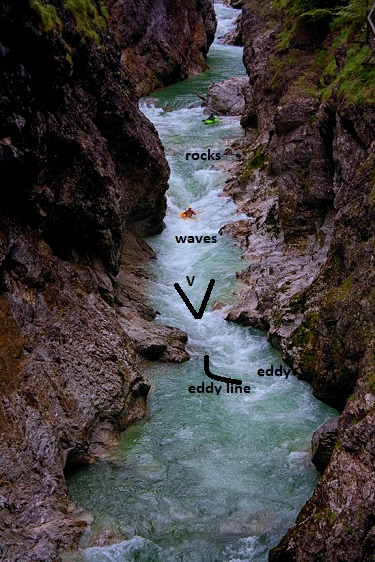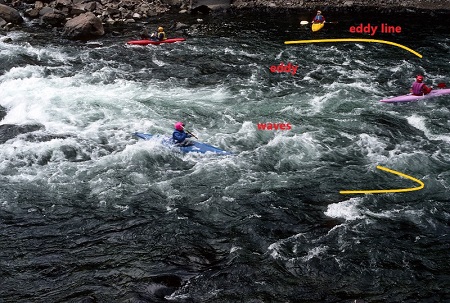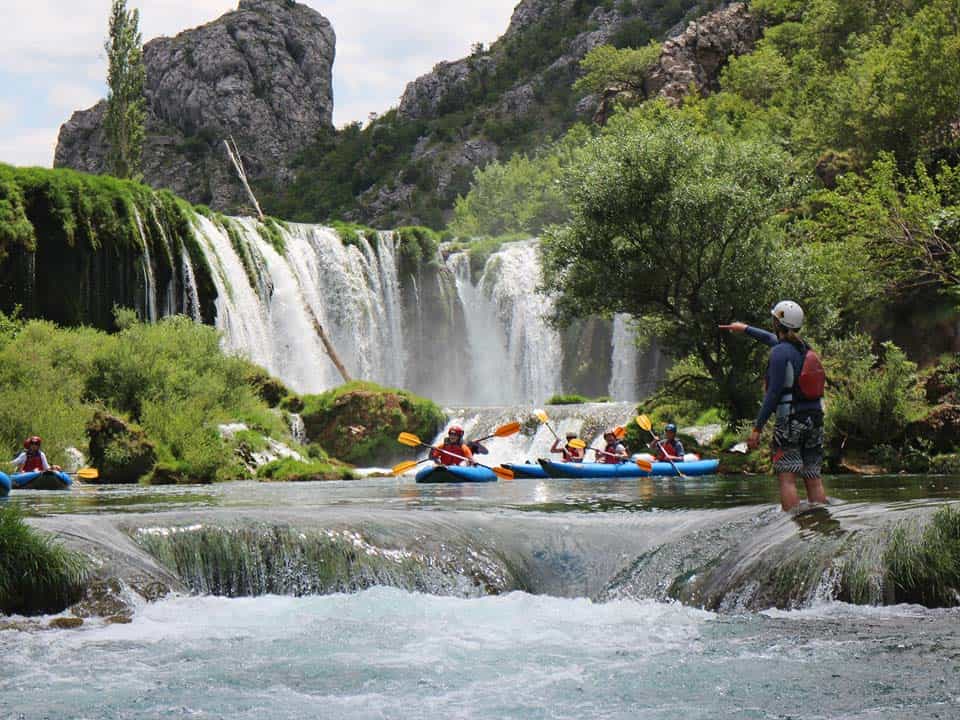If you are going to do whitewater kayaking you should know how to read a river for kayaking. Because kayaking on flat water and the running river is not the same thing. White water kayaking requires extra precautions than kayaking on a lake or flat water where nothing to worry about obstacles.
So the good news is there are a variety of techniques to read a river for kayaking. You can use your paddles to gauge the size of the waves, and you can use your eyes to see how the waves are breaking. You can also look at the current to get a feel for how fast the water is flowing. Rivers are always changing, it’s very important to learn how to read a river for kayaking. In this article, we will learn about the different features of a river and how to read and identify those.
Table of Contents
What Are The Features Of A River?
River Rocks
River rocks are large, round rocks that are found in river rapids. They are usually found in fast-moving water over the bedrock and are a major obstacle for kayakers. They are certainly dangerous and can cause kayakers to get hurt if they hit them. However, they are mostly used as a way to explain rapids to beginners and to explain the current in rapids.

Photo by Kurt Liebhaeuser on Unsplash
Holes
There are many holes in the river, and they are very dangerous for kayaking. The holes form when the water is flowing too fast, causing it to erode the river bed. The water flows through the hole and regains its normal depth on the other side, causing a waterfall to form. This is most commonly found in rapids.
Waves
The wave of a river is the change in elevation of the water as it flows downstream. This change in elevation is caused by rocks and other obstacles in the riverbed, called rapids.
Eddy lines
The eddy lines are lines that form in a river as a result of the wave. They are routes that the water takes as it flows around the outside of objects. In a river, an eddy line is the path of least resistance, and it is usually the path of a slow-moving wave. That’s why you should follow the eddy lines for safe kayaking.
Eddy
There are many eddies in a river, and kayakers are often asked to investigate the patterns that they appear. The first thing you should do is identify the type of eddy that you are experiencing. The type of eddy can help you to identify whether the current is moving too fast or too slowly.
How to read the river and paddle through it
First of all, look at the river to the downstream. Look for eddies that are good so that we can stop there. Since we are not going through the river at a stretch that is why we need to choose segment-wise. After moving from the upstream look for a good eddy where we can stop for the next eddy. Now what you’re trying to do now is find a line that’s going to get you from the eddy we’re into the next good eddy where you want to stop.
What are you good at? Know this first
One thing to know about a rapid is there’s almost never just one line between where you are and the next Eddy. What you need to do is know what you’re good at. Are you good at doing s turns behind rocks pulling into Eddie’s behind rocks or are you good at going through waves or are you good at jumping over holes? Basically, once you know the answer to that you can pick a line or pick a variety of lines to get to that next Eddy.
What is the easiest way to start kayaking? How to identify it?
Start with the easiest possible way from where you are to the next Eddy. Usually, the easiest way is to follow the fastest current. You can identify the fastest current. Number one, if you look downstream usually you’ll see waves. Waves usually identify the fastest current. Another thing that you will see that will help you identify the fast current is a V. The V is usually created by water going in between rocks and it pretty much always points in the direction where you want to go now. The beauty of a V is anytime you see a V you know the water is deep and you know the water is moving.
So step one when you’re in the eddy look downstream. Do you see the V? Do you see the current between you and the next eddy?
Step two are there any obstacles you may have to go around? Are there any holes or rocks? If there are holes or rocks in the way identify which way you want to go around them. Are you going to go around the left or are you going to go around the right of them?
Your number one priority when running a rapid and reading the water is to leave as much margin for error as possible. The margin for error means if you goof off you should still have time to gather yourself together roll up or simply get the boat back on line and get back to the feature you’re going for back to the next Eddy.
What are the common mistakes done by the people?
Some common mistakes people make with river reading and picking their line. Mistake number one is once they get in the rapid even though they pick the line they’re not looking at the eddy where they want to go or the obstacles in their way. Instead what they’re looking at is their bow and they almost get hypnotized by looking at their bow. By looking at your bow you see the water is going everywhere. Waves are crashing over your boat. You get lost and confused and you never get to your target. Instead what you need to always focus on is the target where you want to go. That’s rule number one for running the rapid.
Remember the above things before hitting a running river. Don’t be too excited to dive into a beautiful river. First, have a look at the river and understand the class of the river. Finally, decide where and how you want to go. Always wear safety gear to avoid any injury.


Pingback: Whitewater Kayaking Lessons: What to learn? - Safekayaking
Pingback: 5 Kayaking Mistakes Done By Many Kayakers! - Safekayaking